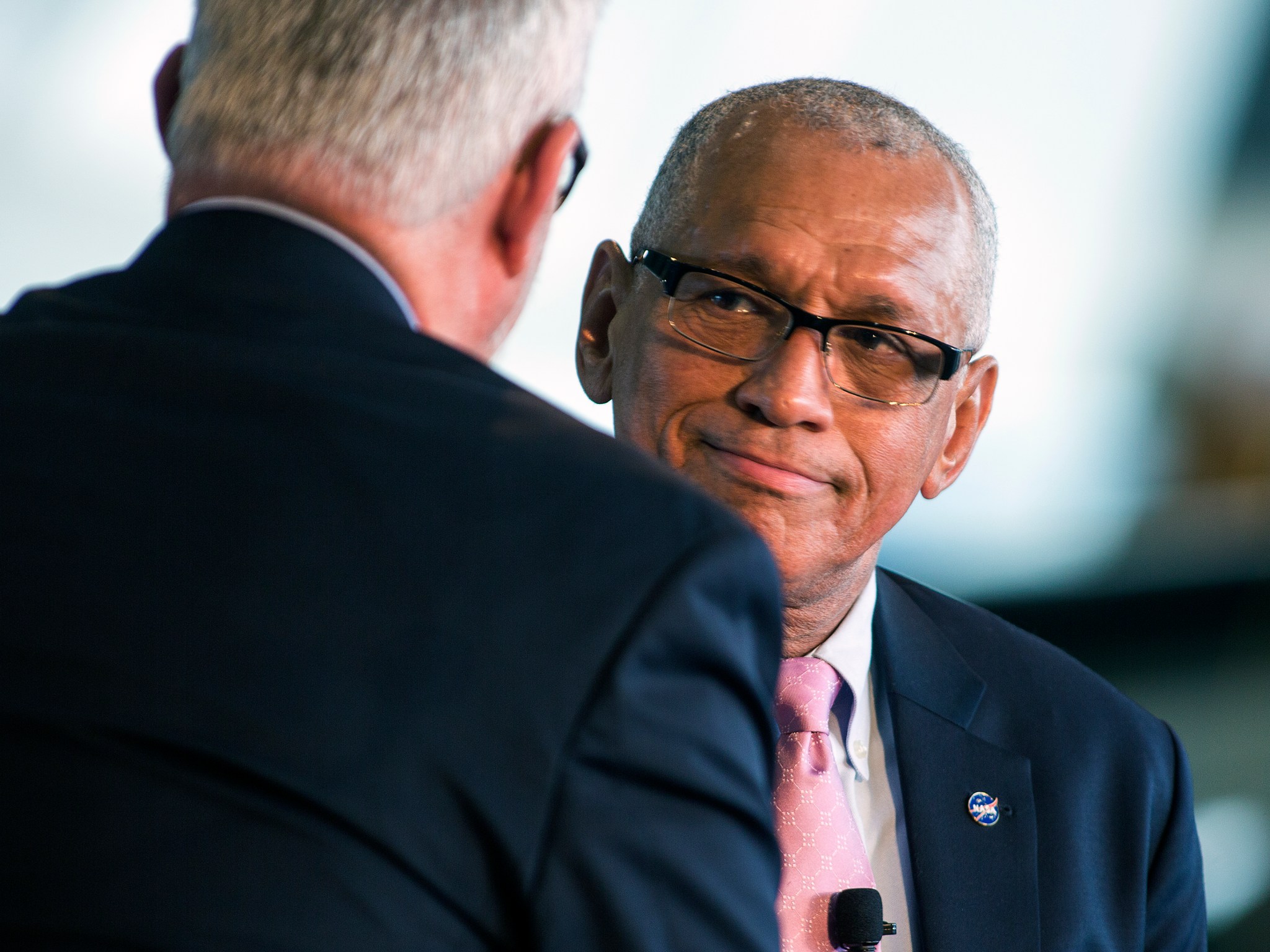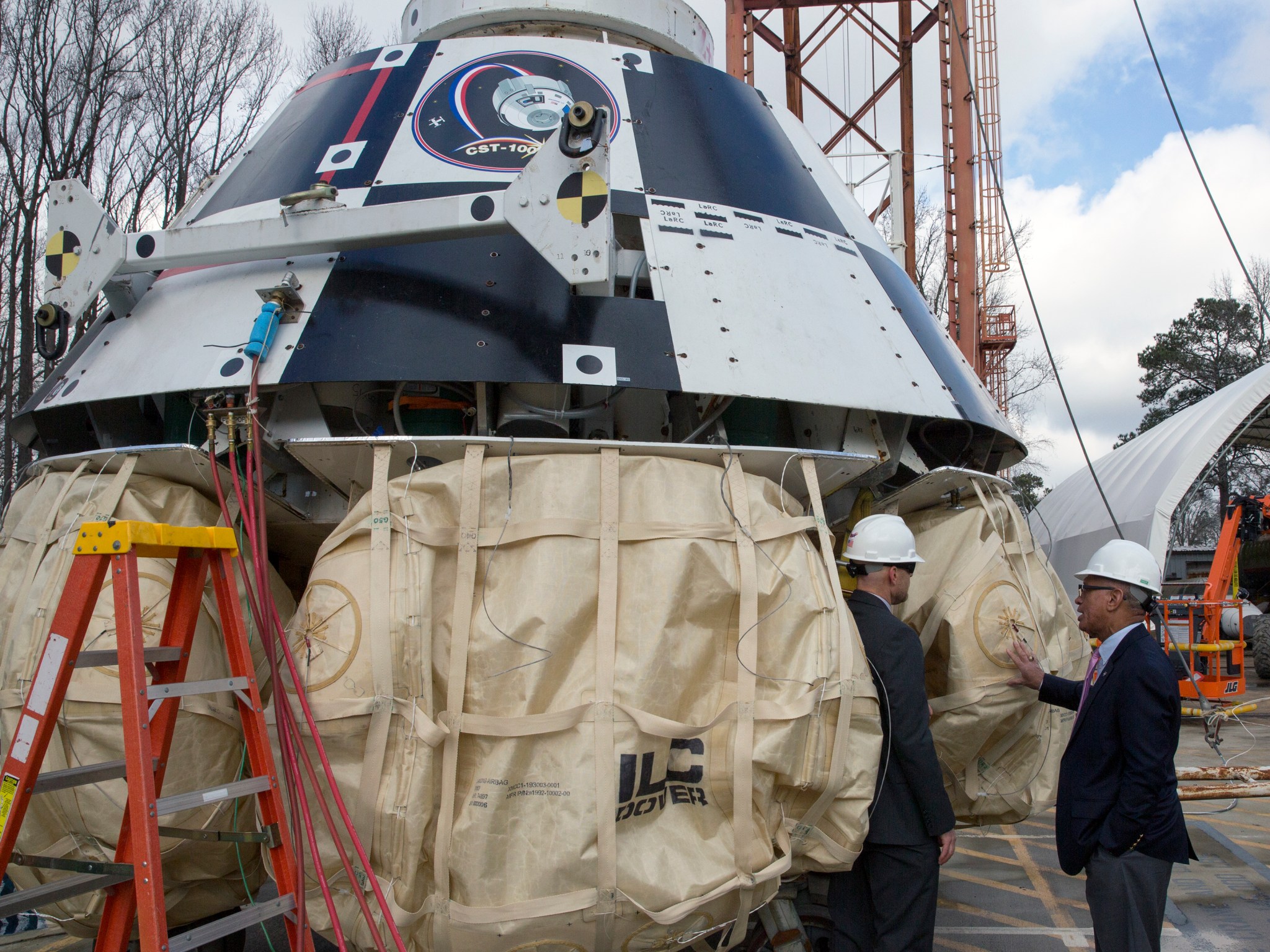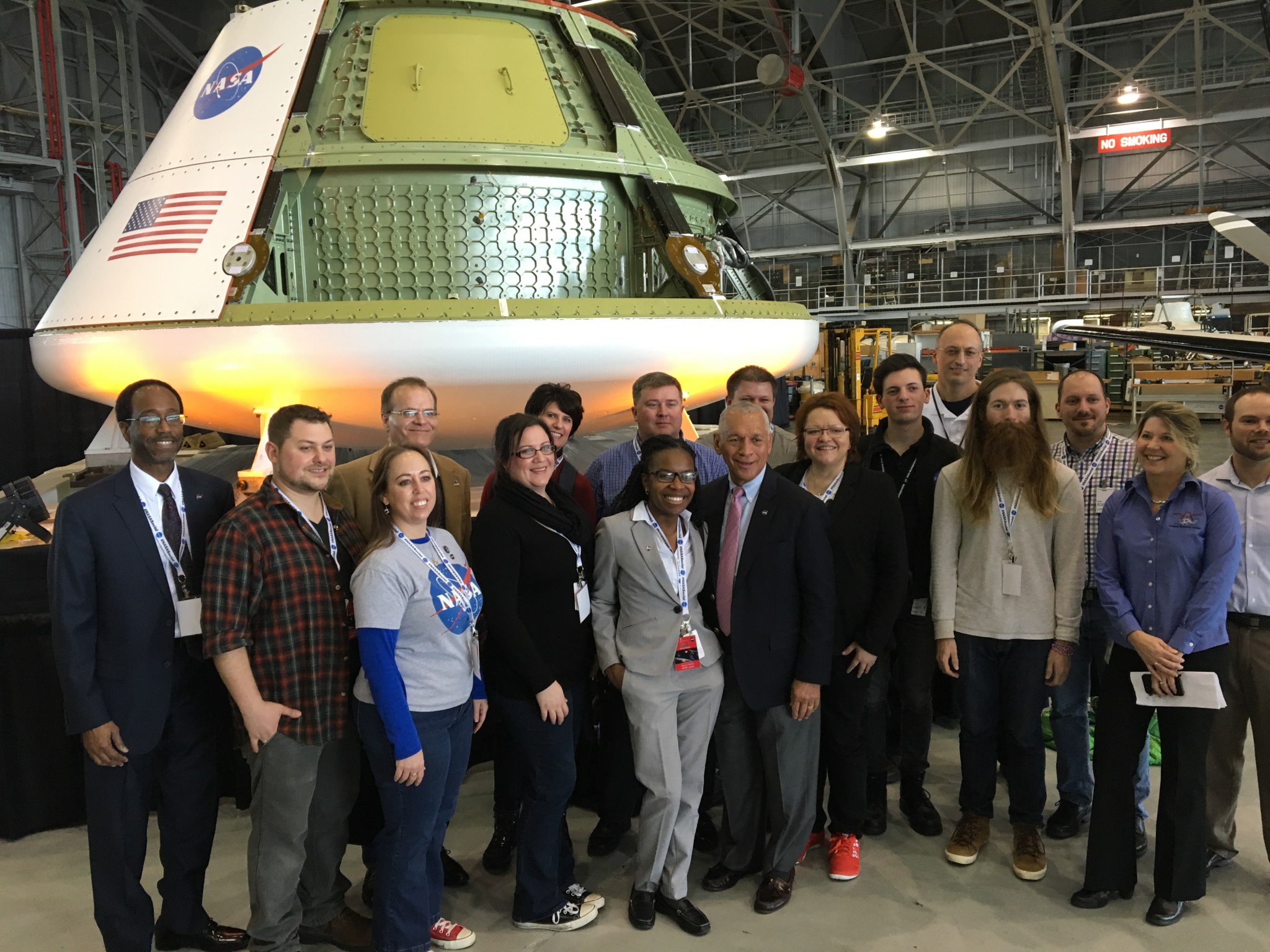NASA Administrator Charles Bolden stepped on a stage at NASA’s Langley Research Center and delivered a message brimming with optimism and gratitude.
Bolden’s Feb. 9 “State of NASA” speech, part of the rollout for President Barack Obama’s $19 billion Fiscal 2017 budget proposal for the agency, was watched by workers at NASA facilities across the nation through live broadcast on NASA TV.
Speaking inside the center’s historic hangar, where Gemini and Apollo astronauts practiced rendezvous and docking maneuvers, Bolden declared that the state of the agency is strong.
“The investments included in the president’s FY 2017 budget proposal announced today will empower the people of NASA improving our quality of life today and preparing to send American astronauts to Mars in the 2030s,” he said.
“Thanks to each and every one of you, each and every one of you in this audience, each and every one of you in our NASA family around the country … We’ll continue to do what it takes to turn science fiction into science fact and to make the impossible possible.”
Bolden noted that NASA’s Langley Research Center will celebrate its centennial in 2017. He drew a parallel between the early days of aviation and NASA’s current partnerships with American aerospace companies.
“Both are stories about how we were able to accomplish great things when we combined strategic government investment and research with the native genius of American inventors and industry,” he said.
Bolden also highlighted the accomplishments of one of NASA Langley’s own living legends, the mathematician Katherine Johnson who late last year accepted the Presidential Medal of Freedom for her contributions to the American space program.
“It’s because of the legacy of NASA employees like Katherine Johnson, it’s because of your work here at Langley, it’s because of the work of your colleagues at our NASA centers across the country, it’s because of the work of our contractors, our partners in classrooms, boardrooms, laboratories and even garages across our country, that the state of our NASA is as strong as it’s ever been,” he said.
Bolden’s talk drew national attention to NASA Langley and gave researchers the chance to showcase some of their innovative work.
The morning of his speech, the administrator made stops around the center to check on key projects. He spoke with researchers working on the CLARREO (Climate Absolute Radiance and Refractivity Observatory) Pathfinder Mission, a climate change measurement initiative that’s set to reach the International Space Station in 2020.
He also got a close-up look at Boeing’s CST-100 Starliner spacecraft, which is being splash tested at NASA Langley’s Hydro Impact Basin. That capsule, which would land on land, is designed to take NASA astronauts to and from the International Space Station safely and affordably.
Later in the afternoon, Bolden stopped by the Langley Autonomy and Robotics Center where scientists, engineers and student interns test small, unmanned aerial vehicles with the goal of developing safe, reliable autonomous systems.
Looking into labs
The Autonomy and Robotics Center was also a stop in a NASA Social event organized in conjunction with Bolden’s address. NASA Socials offer people from the general public a chance to visit NASA facilities, learn about the work happening and share their experiences on social media.
From the autonomy lab, visitors Tweeted, “We don’t do autonomy for autonomy’s sake — it’s a tool to help us achieve our missions,” and “Electromagnetic latching mechanism — Super cool!”
Twelve NASA enthusiasts traveled from up and down the East Coast to be part of the action at Langley. Aside from watching self-piloted drones buzzing inside the Langley Autonomy and Robotics Center, participants toured the National Transonic Facility wind tunnel; heard from Langley experts about atmospheric science missions; and listened to an explanation of upcoming water-impact tests for an Orion crew module mock-up. Orion will one day allow American astronauts to explore the solar system.
Of course, visitors also heard the administrator speak about the agency’s strength and sense of purpose.
“I really believe in what he said about investments in NASA today are investments in our nation’s future,” said Melissa Patton, a bartender and massage therapist from Williamsburg, Virginia, who attended Bolden’s speech through the NASA Social. She’s been fascinated with NASA’s missions since childhood and her enthusiasm still burns bright.
She’s particularly fired up about plans to send astronauts to Mars in the 2030s.
“I’m ready for my grandkids’ passports to have ‘planet of origin,’” Patton said. “I believe it’s doable.”
Jeffrey Wallace of New York City said he found Bolden’s speech inspiring.
“I believe we’re on a precipice of another great step forward,” he said, citing the Space Launch System and NASA’s Commercial Crew Program as evidence. “This is a big deal,” he said.
The local picture
The day’s festivities ended with one more look into the future. After Bolden’s talk, NASA Langley Center Director Dave Bowles gave employees a quick overview of what the president’s budget means for the employees he leads.
Bowles said he sees exciting opportunities for the center as the agency establishes a major new flight initiative to reduce fuel consumption, emissions and noise while also opening new markets for U.S. industry.
Elsewhere, the proposed $769 million Langley budget supports the center’s existing work in areas such as pursuing revolutionary air vehicle concepts, understanding Earth’s atmosphere and climate, and researching innovative lightweight structures and materials for use in space.
Funding would continue for Langley’s work on the Orion spacecraft and the Space Launch System, NASA’s next heavy-lift rocket.
The center’s revitalization efforts would continue under the fiscal 2017 budget proposal, too. Langley’s new Computational Research Facility is now under construction. Bowles announced that the facility is to be named in honor of Katherine Johnson.
“That’s a great tribute,” Bowles said. “We will have a big celebration for that.”
Construction on another new building, the center’s Measurement Systems Laboratory, will begin later this year.
“In summary, the state of both the center and the agency is strong,” Bowles said. “We’ve done great things for 100 years. With your help, we’ll do great things for the next 100 years.”





























